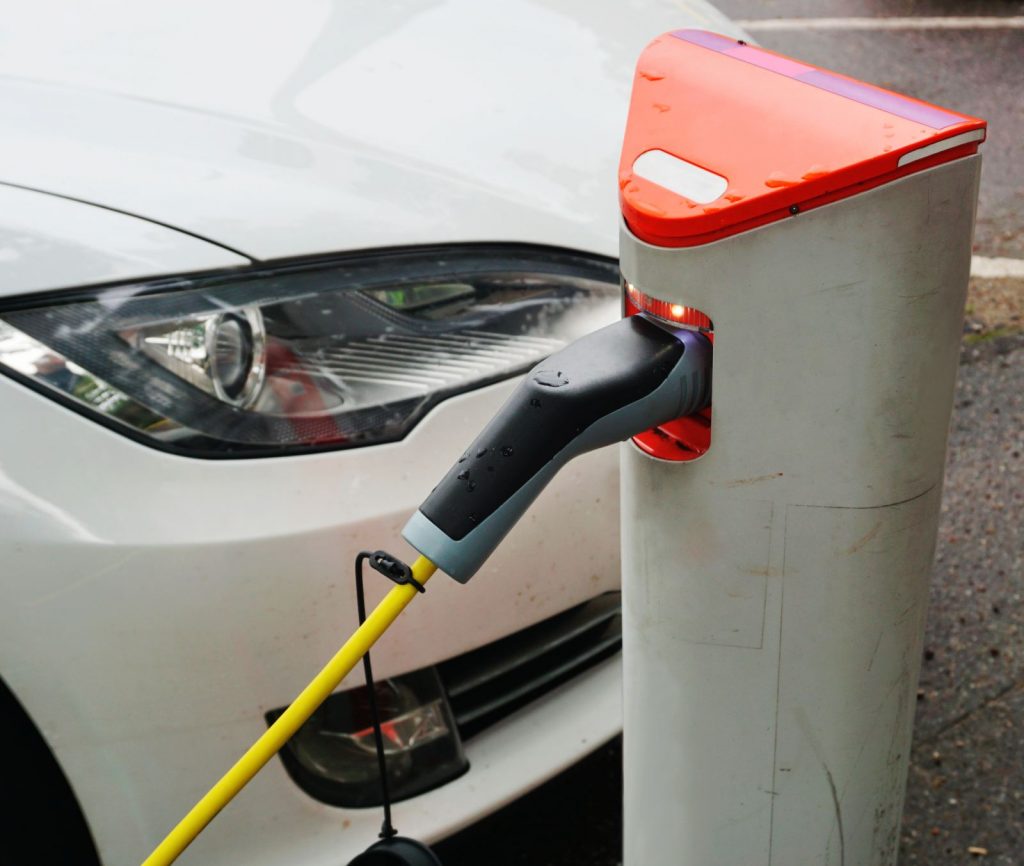All New Vehicles in U.S. Could Be Electric Vehicles by 2035
Marijuana Business, Stocks, Finance, & Investing May 10, 2021 MJ Shareholders 0


Electric Vehicle Industry Just Getting Ramped Up
When it comes to electric vehicles (EVs), most investors think of Tesla Inc (NASDAQ:TSLA). And for good reason: CEO Elon Musk isn’t exactly known for his modesty.
But Tesla is just one of many EV companies out there. There will need to be a lot more of them in the coming years to keep up with demand as countries around the world look to tackle greenhouse gas emissions.
In 2020, EVs accounted for just 4.2% of light-vehicle sales worldwide. That doesn’t sound like much, but that’s up from 2.5% in 2019. (Source: “Global Sales of Electric Cars Accelerate Fast In 2020 Despite Pandemic,” The Guardian, January 19, 2021.)
In the U.S., electric vehicle sales account for two percent of all cars on the road, but that percentage is expected to surpass 3.5% in 2021. And that pales in comparison to what industry analysts believe will happen over the next 20 years. (Source: “U.S. All-Electric Car Market Share Hit All-Time High In 2020,” InsideEVs, February 20, 2021.)
2020 will be forever remembered as the year of COVID-19, layoffs, and a global recession. As a result, it was not a kind year to automakers, with sales contracting by 16%. The same cannot be said for the EV market, where sales actually jumped by 43% to three million.
Again, those are small numbers, but electric vehicle sales are still in their infancy. And everything is relative. In 1910, there were about 500,000 motor vehicles cruising the streets of America. A decade later, that number had ballooned to nearly 29 million. The growth of the EV sector over the coming years will be even more spectacular.
Leading the adoption of electric vehicles is Europe. In 2019, there were 1.8 million EV and plug-in hybrid vehicles registered in Europe. In 2020, EV sales hit 1.4 million. By 2030, that number is expected to jump to at least 30 million. (Source: “EU to Target 30 Million Electric Cars by 2030 – Draft,” Reuters, December 4, 2020.)
For many people, gas- or diesel-powered cars won’t even be an option. Many European countries, like France and Slovenia, have set end dates for the sale of new fossil-fuel cars. (Source: “The Countries and States Leading the Phase Out of Fossil Fuel Cars,” The Driven, November 12, 2020.)
In less than five years, Norway wants all of the new passenger vehicles, light commercial trucks, and urban buses sold in the country to be zero-emission. In the Netherlands, buses built from 2025 onward will be zero-emission, with new passenger vehicles following suit in 2030.
This push might explain why Europe’s low-emission vehicle sales have outpaced the rest of the global market—and have continued to climb during the coronavirus pandemic.
We’re seeing the same kind of political action in the U.S.
In September 2020, the governor of California signed an executive order that, by 2035, all new passenger cars and light-duty trucks sold in the state must be zero-emission. (Source: “Governor Newsom Announces California Will Phase Out Gasoline-Powered Cars & Drastically Reduce Demand for Fossil Fuel in California’s Fight Against Climate Change,” Office of Governor Gavin Newsom, September 23, 2020.)
This isn’t lost on the big automakers.
Ford Motor Company (NYSE:F) said it’s going all-in on electric vehicles in Europe by 2030. The company is spending $1.0 billion on a new EV manufacturing center in Cologne, Germany. The first EV will roll out of the new facility in 2023. (Source: “Ford to Go All Electric In Europe by 2030, as Emissions Mandates Tighten,” NBC, February 17, 2021.)
By 2026, all Jaguar vehicles will be pure battery-electric.
Honda Motor Co Ltd (NYSE:HMC) is targeting 100% EV sales globally by 2040, progressing from 40% by 2030 and 80% by 2035. “Summary of Honda Global CEO Inaugural Press Conference,” Honda Motor Co Ltd, April 23, 2021.)
Bentley Motors, Nissan Motor Co Ltd (TYO:7201, OTCMKTS:NSANY, OTCMKTS:NSANF), and General Motors Company (NYSE:GE) have also set varying carbon-neutrality dates.
According to a recent study, though, all those targets could be a little conservative.
Researchers at the University of California have noted that the rapid advances in EV technology and the reducing costs of the batteries could mean all new cars and trucks sold in the U.S. will be electric by 2035. (Source: “2035 The Report: April 2021,” Goldman School of Public Policy, University of California Berkeley, last accessed May 7, 2021.)
Most drivers cite the exorbitant cost of electric vehicles as a reason to not buy one, but the upfront cost of electric cars is expected to reach parity with gas-powered vehicles within five years.
The University of California researchers added that it will be technically feasible to phase out all gas- and diesel-powered vehicles in the U.S. within 15 years.
Analyst Take
As mentioned earlier, the electric vehicle market is still in its infancy. It was only in the 1990s that General Motors first introduced (and killed) an electric car.
Times have changed, and the rapid adoption of EVs globally means EV stocks and the stocks of companies that make batteries or mine energy-transition metals (aluminum, cobalt, copper, nickel, and lithium) could go supernova.
No investor is going to want to miss out on an industry that’s expanding at a compound annual growth rate in excess of 20%.
MJ Shareholders
MJShareholders.com is the largest dedicated financial network and leading corporate communications firm serving the legal cannabis industry. Our network aims to connect public marijuana companies with these focused cannabis audiences across the US and Canada that are critical for growth: Short and long term cannabis investors Active funding sources Mainstream media Business leaders Cannabis consumers











No comments so far.
Be first to leave comment below.